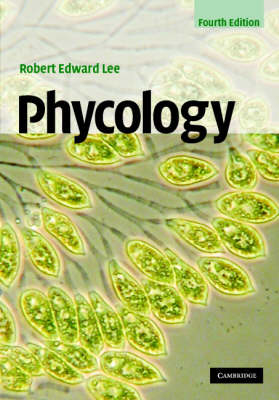
Phycology
Cambridge University Press (Verlag)
978-0-521-86408-4 (ISBN)
- Titel erscheint in neuer Auflage
- Artikel merken
Phycology is the study of algae, the primary photosynthetic organisms in freshwater and marine food chains. As a food source for zooplankton and filter-feeding shellfish, the algae are an extremely important group. Since the publication of the first edition in 1981, this textbook has established itself as a classic resource on phycology. This revised edition maintains the format of previous editions, whilst incorporating more recent information from nucleic acid sequencing studies. Detailed life-history drawings of algae are presented alongside information on the cytology, ecology, biochemistry, and economic importance of selected genera. Phycology is suitable for upper-level undergraduate and graduate students following courses in phycology, limnology or biological oceanography. Emphasis is placed on those algae that are commonly covered in phycology courses, and encountered by students in marine and freshwater habitats.
Robert Edward Lee was educated at Cornell University (BS, 1960–4) and the University of Massachusetts, Amherst (Ph.D., 1966–71) and served as a Platoon leader in the US Army First Infantry Division (1964–6). He was Lecturer at the University of the Witwatersrand, Johannesburg (1971–7), Associate Professor at Shiraz (Pahlavi) University, Shiraz, Iran (1977–9), Fellow of Schepens Eye Research Institute and Harvard Medical School, Boston (1979–81) and is currently Coordinator of Biomedical Sciences at Colorado State University, a post he has held since 1981.
Preface to the first edition; Part I. Introduction: 1. Introduction; Part II. The Prokaryotic Algae: 2. Cyanobacteria; Part III. Evolution of the Chloroplast: 3. Glaucophyta and Chloroarchnion; 4. Rhodophyta; 5. Chlorophyta; Part IV. Evolution of One Membrane of Chloroplast Endoplasmic Reticulum: 6. Euglenophyta; 7. Dinophyta; 8. Apicomplexa; Part V. Evolution of Two Membranes of Chloroplast Endoplasmic Reticulum and the Chlorarachniophyta: 9. Cryptophyta; 10. Heterokontophyta, Chrysophyceae; 11. Heterokontophyta, Synurophyceae; 12. Heterokontophyta, Eustigmatophyceae; 13. Heterokontophyta, Pinguiophyceae; 14. Heterokontophyta, Dictochophyceae; 15. Heterokontophyta, Pelagophyceae; 16. Heterokontophyta, Bolidophyceae; 17. Heterokontophyta, Bacillariophyceae; 18. Heterokontophyta, Raphidophyceae; 19. Heterokontophyta, Xanthophyceae; 20. Heterokontophyta, Phaeothamniophyceae; 21. Heterokontophyta, Phaeophyceae; 22. Heterokontophyta, Prymnesiophyta; 23. Algae and the environment; Glossary.
| Erscheint lt. Verlag | 27.3.2008 |
|---|---|
| Zusatzinfo | 3 Tables, unspecified; 144 Halftones, unspecified; 374 Line drawings, unspecified |
| Verlagsort | Cambridge |
| Sprache | englisch |
| Maße | 195 x 280 mm |
| Gewicht | 1340 g |
| Themenwelt | Naturwissenschaften ► Biologie ► Botanik |
| Naturwissenschaften ► Biologie ► Limnologie / Meeresbiologie | |
| ISBN-10 | 0-521-86408-9 / 0521864089 |
| ISBN-13 | 978-0-521-86408-4 / 9780521864084 |
| Zustand | Neuware |
| Haben Sie eine Frage zum Produkt? |
aus dem Bereich



